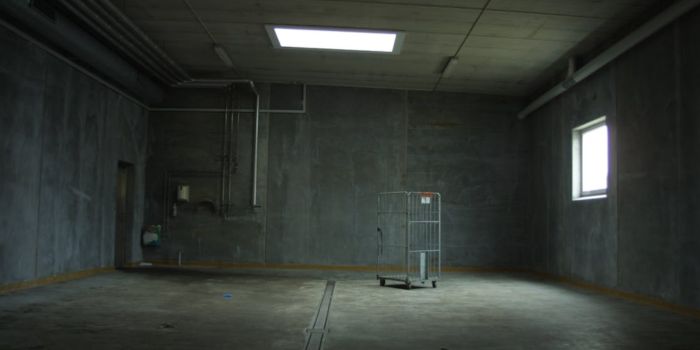The construction industry plays a pivotal role in shaping modern infrastructure, driving economic growth, and improving societal connectivity. However, while construction projects contribute to long-term transportation improvements, they also exert immediate and significant impacts on transportation systems. From road congestion and environmental concerns to logistical challenges and technological integration, understanding the interplay between construction activities and transportation is essential for policymakers, engineers, and urban planners.
Construction-Induced Traffic Disruptions
One of the most immediate and visible impacts of the construction industry on transportation is traffic disruption. Road construction, highway expansion projects, and urban development initiatives often require lane closures, detours, or temporary rerouting of traffic. These disruptions can lead to congestion, increased travel times, and heightened risks of accidents. In metropolitan areas, even short-term construction projects can exacerbate traffic congestion, affecting commuters, public transit operations, and freight movement.
For example, highway construction in densely populated cities often necessitates partial closures during peak hours, compelling drivers to seek alternative routes. This not only increases travel time but can also shift congestion to less prepared routes, creating secondary traffic problems. Similarly, construction near airports, ports, or rail hubs can disrupt the movement of goods, affecting supply chains and local economies.
Transportation of Construction Materials
The transportation of construction materials, including concrete, steel, lumber, and heavy machinery, places significant demands on transportation networks. Construction projects frequently require the movement of oversized or heavy loads, which may necessitate specialized transport vehicles and temporary modifications to infrastructure, such as reinforced bridges or widened lanes.
These logistical requirements often affect regular traffic flow. For instance, large trucks carrying construction materials may occupy multiple lanes, slow down traffic, or cause wear and tear on roads. The increased frequency of such heavy vehicles also raises the risk of accidents and contributes to road deterioration. Over time, municipalities must account for these stresses in road maintenance and repair schedules, which can add to public expenditures.
Environmental Impacts on Transportation
Construction activities also have environmental consequences that indirectly affect transportation. Dust, noise pollution, and emissions from heavy machinery can reduce air quality in nearby areas, posing health risks for commuters and pedestrians. Additionally, construction-related congestion increases fuel consumption and greenhouse gas emissions, contributing to climate change and urban heat effects. This increased fuel usage also highlights the importance of proper vehicle maintenance, where products like Fuel System Cleaners help improve engine efficiency and reduce harmful emissions.
For example, prolonged traffic delays caused by construction can significantly increase carbon emissions from idling vehicles. Urban planners and environmental regulators must balance the necessity of infrastructure development with measures to mitigate these environmental impacts, such as scheduling construction during off-peak hours, implementing dust control measures, and optimizing material transport routes.
Economic Implications for Transportation Systems
The construction industry’s impact on transportation extends to economic dimensions. Delays caused by construction can reduce worker productivity, increase fuel costs, and elevate shipping expenses for businesses reliant on timely deliveries. Furthermore, infrastructure projects themselves often require substantial investments in transportation improvements, such as building new roads, bridges, or rail systems.
While these investments enhance long-term transportation efficiency, the short-term economic costs of construction-related disruptions can be significant. Cities and states must carefully plan construction schedules and financing to minimize negative economic impacts while maximizing long-term benefits. For instance, phased construction projects or the use of pre-fabricated materials can reduce onsite construction time, mitigating economic losses associated with transportation delays.
Technological Integration and Smart Construction Solutions
Advancements in technology offer promising solutions to reduce the construction industry’s impact on transportation. Intelligent transportation systems (ITS), GPS-enabled construction vehicles, and real-time traffic management tools can help coordinate construction activities and minimize disruptions.
For example, construction projects can leverage GPS and traffic data to optimize material delivery schedules, reducing the number of trucks on congested roads during peak hours. Similarly, smart signage and adaptive traffic signals can inform drivers about detours or lane closures, improving traffic flow around construction zones. Moreover, implementing a comprehensive adaptive traffic guidance scheme can significantly enhance the efficiency and safety of traffic management in construction areas. Drones and autonomous vehicles also have the potential to transport materials more efficiently, further minimizing transportation disruptions.
Long-Term Benefits of Construction on Transportation
Despite the short-term disruptions caused by construction, the industry ultimately contributes to significant improvements in transportation infrastructure. New roads, bridges, tunnels, and transit systems enhance connectivity, reduce travel times, and support economic growth. For instance, well-planned highway expansions can accommodate future traffic volumes, while urban transit projects, such as metro or light rail systems, reduce dependence on personal vehicles and mitigate congestion.
Moreover, construction projects often integrate sustainability features, such as dedicated bike lanes, pedestrian pathways, and eco-friendly materials, which enhance the safety and efficiency of transportation networks. The modernization of infrastructure through construction can also improve freight logistics, supporting smoother supply chains and more reliable transportation services.
Policy Considerations and Planning Strategies
To balance the challenges and benefits, policymakers and urban planners must adopt strategic approaches that mitigate construction-related transportation disruptions. Effective planning includes conducting traffic impact assessments before initiating projects, coordinating construction schedules with local transit authorities, and communicating clearly with the public about expected delays and alternative routes.
Additionally, policies promoting off-peak construction, use of modular construction methods, and integration of smart transportation technologies can reduce negative impacts while maintaining project efficiency. Public-private partnerships can also facilitate the financing and execution of infrastructure projects, ensuring timely completion and minimising transportation disruptions.
Conclusion
The relationship between the construction industry and transportation is complex and multifaceted. While construction activities can temporarily disrupt traffic, increase emissions, and impose logistical challenges, they also provide essential improvements to infrastructure, connectivity, and long-term economic growth. Through careful planning, technological innovation, and strategic policy implementation, the construction industry can minimize its adverse effects on transportation while enhancing mobility and accessibility for communities.
As urban populations grow and transportation demands increase, understanding and managing the impact of construction on transportation will remain critical for sustainable development. By striking the right balance, cities and nations can ensure that construction projects serve as a catalyst for better, safer, and more efficient transportation networks.




